Passover Israeli Eggplant Salad is the Israeli version of the Middle Eastern baba ganoush, made with roasted eggplant and mayonnaise, and kosher for Passover. It is simple to make, dairy free, vegetarian, and delicious!
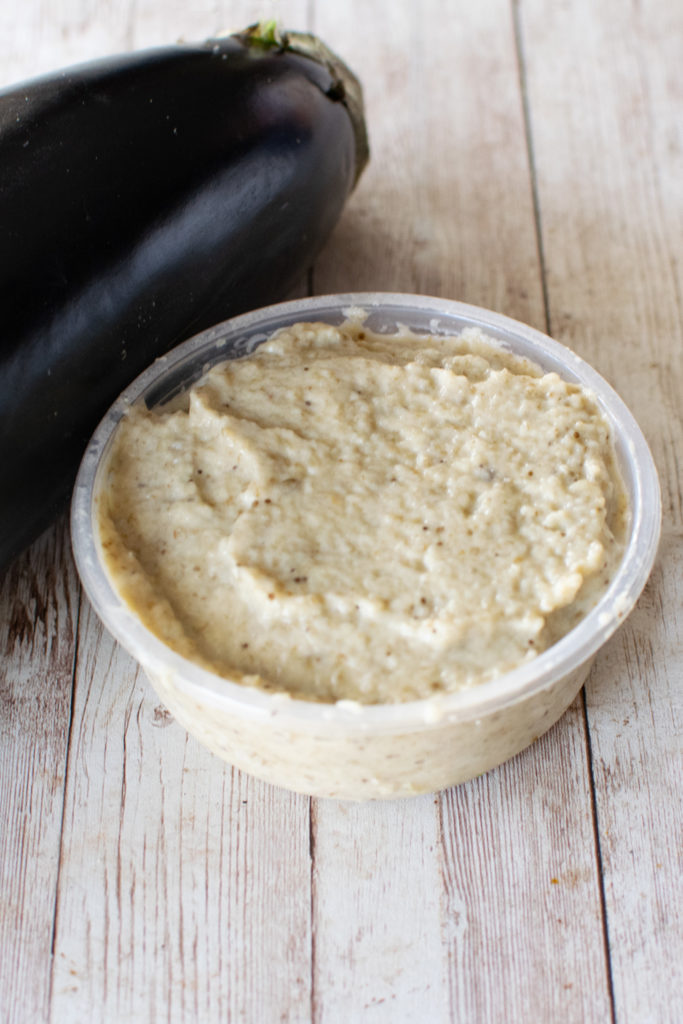
Passover Israeli Eggplant Salad is so good and so simple to make, you may never want to spend the money to buy it from the store again!
Eat Passover Israeli Eggplant Salad alone, as a spread, as a dip with matzo, as a condiment in a sandwich. It is delicious any way you want to eat it!
It contains no matzo meal, so you can even have it on the day of the seder!
The eggplants for this salad are roasted. You can do this in several simple ways:
1) Roast over an open flame: Poke a fork or a knife into the eggplant in several places to allow air to escape. Then, place the eggplant over a burner with open flame on your stove (cover around the burner with aluminum foil first to protect it from the eggplant, which will leak as it cooks). Some people first wrap the eggplant in aluminum foil before placing on the flame, so whichever way works for you. Turn or reposition the eggplant every 2-3 minutes as the part over the flame has blackened and has shriveled a bit, until the entire eggplant has blackened shriveled somewhat. This is the best way to prepare it (over an open flame), because of the smokey flavor it gives.
2) Roast over an electric stove: The same as the process above, but use a grill pan over the burner. It may not cooks as quickly as it does on an open flame.
3) Roast in the oven: Poke a fork or a knife into the eggplant in several places to allow air to escape. Place the eggplant on a baking tray or in a baking pan lined with aluminum foil or baking paper. Place in a oven on a high temperature (400°F – you can use a higher temperature, but check more often) and turn the eggplant every 10-15 minutes or so until the entire eggplant has blackened shriveled somewhat.
4) Broil in the oven: Poke a fork or a knife into the eggplant in several places to allow air to escape. Place the eggplant on a baking tray or in a baking pan lined with aluminum foil or baking paper. Place in a oven on broil and turn the eggplant every few minutes or so until the entire eggplant has blackened shriveled somewhat.
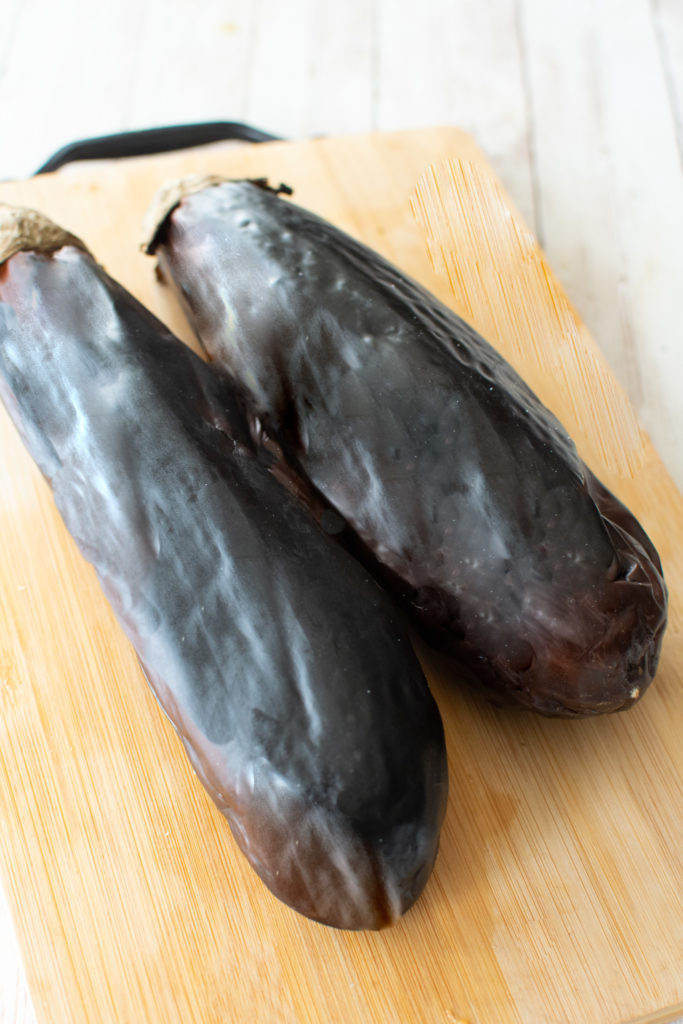
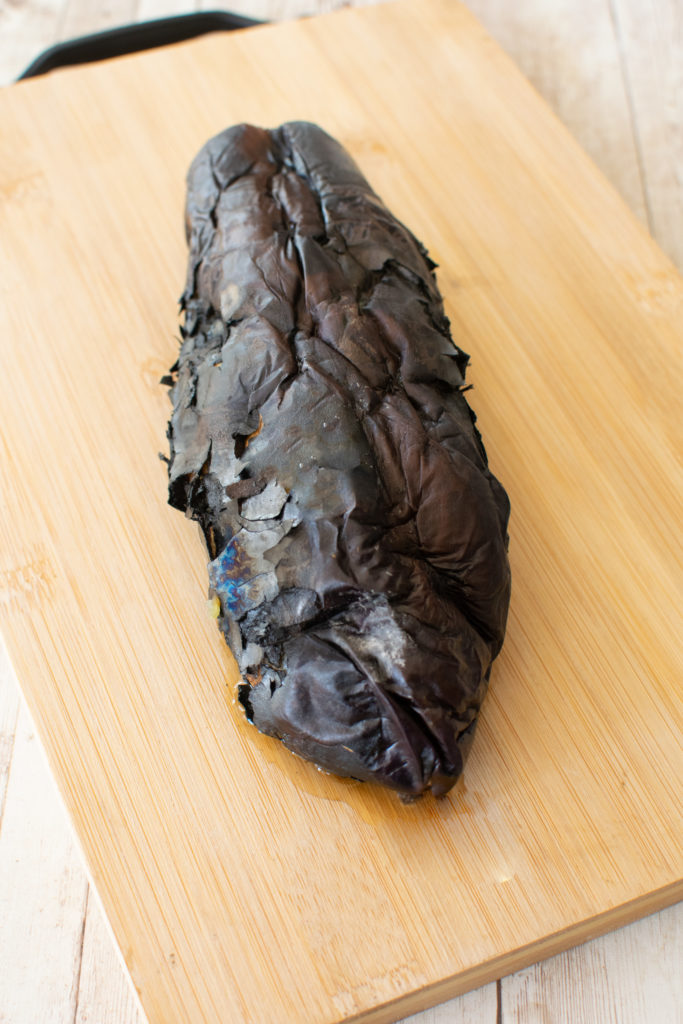
They are ready when you can easily slide a fork or knife through the skin and meat of the eggplant.
Many people don’t bother to make salad out of it They just slice it open, sprinkle with salt and/or pepper, and eat it right out of the skin, such as with: Passover Roasted Eggplant
A little of my cooking background
I really wanted to title this blog “If I can make it, anyone can”, because – honestly – if I can make it, anyone can.
I never really liked cooking and when I was single, a meal for me meant grilled cheese, eggs, tuna, or something else that didn’t require effort or time.
When my kids were young, I was still able to get away with preparing only a small variety of easy meals, but the older they got, the more dishes I learned to make at their request.
Still, I insisted on keeping it simple.
Honestly, I never understood why some cooks unnecessarily complicate meals. I have seen recipes that have several ingredients that don’t really seem to add much, if anything, to the dish. So, why bother?
It has always been important to me that whoever eats at my table will have plenty to enjoy and that includes my kids (I never agreed with the “You will eat what is served or you won’t eat” ideology) and, because I keep it simple, I can prepare a variety of dishes in a relatively short period of time.
I have a philosophy regarding being a great cook: Prepare food according to the tastes of those who will be eating it and they will love your cooking!
As far as I am concerned, start with the basic ingredients that make the dish what it is, adapt according to taste, and voila! you are an amazing cook!
The bottom line is that while there are certainly delicate recipes out there for specialty dishes, making delicious meals doesn’t have to be complicated or time consuming. It’s not difficult to impress – just make sure it tastes good.
While some of the recipes on my blog are more time-consuming than others, they are all tried and true easy-shmeezy!
Of course, one always has to consider the conditions under which they cook. Weather (humidity, heat, cold), different types of ovens, different quality of pots, etc. – all of which can affect your cooking and baking.
Nevertheless, as I said, if I can do it, anyone can!
Food on Passover
Torah observant Jews do not eat chametz (the fermented products of five grains: wheat, spelt, barley, oats and rye).
In addition, Torah observant Ashkenazi Jews do not eat kitniyot (or kitniyos as pronunced in Ashkenazi Hebrew). These include: legumes, corn, rice, and similar that were deemed forbidden to eat by rabbis in the medieval period and are still not eaten today. Sephardi and Mizrachi Jews do not follow this tradition.
Many ovservant Ashkenazi Jews will not even eat the derivatives of these kitniyot, while others do (each family holds their own traditions regarding this).
Then, there are Ashkenazim who don’t eat “gebrochts”.
Gebrochts means “broken” in Yiddish – and in this case refers to matza that has absorbed liquid. Not eating gebrochts is observed by many in the Hasidic Jewish community and Ashkenazim who have taken on this tradition where they basically don’t mix anything wet with matza.
So, things like matzo sandwhiches, fried matzo, and even matzo balls are a no-no for them.
There is a joke that sums it all up:
On Passover, we should remember people who have little to eat on this holiday. They are called Ashkenazim.
Over the years, I have learned to adapt “normal” food for passover so that my family won’t complain about boring, tasteless, or repetitive meals.
I find that having good food and variety makes the week of Passover a very pleasant experience and I hope this recipe will help make yours just that!
Kosher for Passover Pantry Essentials (Suggestion)
As I learned to prepare more and more recipes for Passover, I also learned which basics and seasonings are good to have on hand to have the ability to make a dish on short notice – especially during the holiday – and not have to run out to the store or borrow from a neighbor.
While I will admit that I am not always prepared when one of my kids will ask for eggplant parmesan or something at the drop of a hat (which they have done), I dislike having to postpone making something just because the ingredients needed to make a reasonable meal were not readily available.
So, I maintain selection of what I consider “kosher for Passover pantry essentials” in my refrigerator and on my shelves during the week of Passover (some of the dry goods, I keep from year to year, stored well).
While, of course, most of the essentials will not be needed just for any one recipe, at least some of them are needed for most recipes, and you would be surprised how many recipes be made just with this list. So, if you make sure to have whatever you use regularly on hand, it can really save you time and effort.
Everyone has their favorite recipes, preferred seasoning, and just whatever they like to use to cook. Your own list should certainly reflect your own cooking tastes and style. Just make sure that everything is Kosher for Passover (KP) and if you are Ashkenazi, that list will be shorter than if you are not.
Make sure to check with a qualified rabbi if you have any questions.
Following is a pretty comprehensive list of what you can choose from to keep on hand. I keep quite a bit of it.
Seasoning and flavoring:
- salt
- ground black or white pepper
- granulated garlic or garlic powder
- onion powder
- ground cinnamon
- sugar (granulated)
- brown sugar
- chicken consomme powder
- onion soup mix
- various herbs
- additional spices to adapt taste to preference
Misc:
- oil / margarine / butter / cooking spray
- potato starch as a thickening agent
- baking powder
- matzo cake meal (matzo meal, but ground into a powder)
- condiments – such as ketchup, mustard, barbecue sauce
- tomato sauce/tomato paste/canned tomatoes – diced or crushed/pasta sauce
We always have eggs in the fridge and onions, and potatoes on our shelves (if we were not Ashkenazi, I would certainly keep rice as well).
In addition, having some fresh vegetables in the fridge, such as carrots, celery, tomatoes, bell peppers (red, green, etc), etc. can be very useful when putting together a quick, but delicious meal.
It is also a good idea to have some ground meat or chicken (breast, ground, or in parts), in the freezer for anyone who likes meat dishes in a snap.
Why are these pantry essentials beneficial to have on hand?
Personally, having the above ingredients in my kitchen is very advantageous, as I make a variety of dishes and use most of the items on the list regularly.
Whether or not buying a bunch of herbs, spices, etc. before you know what you are going to make for the week it is workable for you depends on your own personal preference.
Of course, the more you cook and the more varied your recipes, the more you will use, and the more you will need.
If you plan your meals ahead for the week, you will be prepared with whatever else you might need that you wouldn’t even normally keep in your passover pantry.
If you do decide to keep them over from year to year, I would only do so if they can be sealed well (or better yet, stored in the freezer), because not only can weather have an affect on some of the spices and on the chicken consommé powder, but you will be surprised to know just how clever moths are at getting into sealed bags and how hot red pepper powder can attract little black bugs – YUCK!.
A little about eggplants
The eggplant is native to India and Asia, where it can be found growing wild and it is believed that eggplants were brought to Europe sometime during the 7th or 8th century.
Australians and Americans call the vegetable eggplant, while in England it is called a aubergine from the French word for this vegetable.
Because of it’s meaty texture, eggplant is used instead of meat in some vegetarian versions of meat recipes.
While there are a variety of types of eggplants, the one for this recipe is the large egg-shaped (or teardrop-shaped) blackish purple one with the meaty inside.
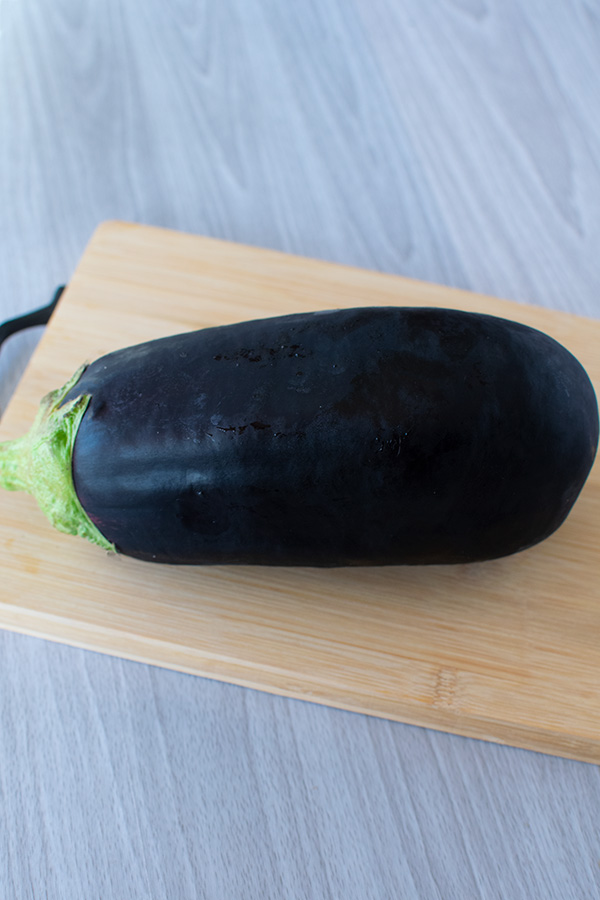
Eggplants have health benefits as they contain antioxidants like vitamins A and C, which help protect your cells against damage and are low in calories.
About cooking eggplant
Eggplants can be roasted, baked, steamed, deep fried, or sautéd.
Before cooking an eggplant, cut off the top part where the green is (called a calyx). The bottom tip should also be removed, but this is not imperative. The skin is perfectly fine to eat, but it must be cooked well, otherwise it may come out chewy.
This recipe can use either peeled eggplants or with the skin (having the skin on will not ruin the recipe).
Eggplant is naturally a little bitter. If you find that to be the case, you can draw out the bitterness by sprinkling it with salt and let it sit a while. If you are using slices or pieces, slightly salt after cutting. I have personally never found this to be a problem when cooking with eggplants
Using salt before cooking can help prevent the eggplant from absorbing too much oil and becoming greasy if using oil with the eggplant recipe (I normally just pat the pieces with a paper towel if need be).
If you do use salt, MAKE SURE to rinse it off before cooking the eggplant or the salt will become a part of your dish!
Personally, I have never salted my eggplants before using them (and I have used eggplants in two countries) and have never had any problem with bitterness, but if you have any concern, please do.
If a recipe calls for frying, but you prefer not to do so because of the calories the oil will add to the recipe, you can spray with cooking oil and bake instead.
Passover Israeli Eggplant Salad
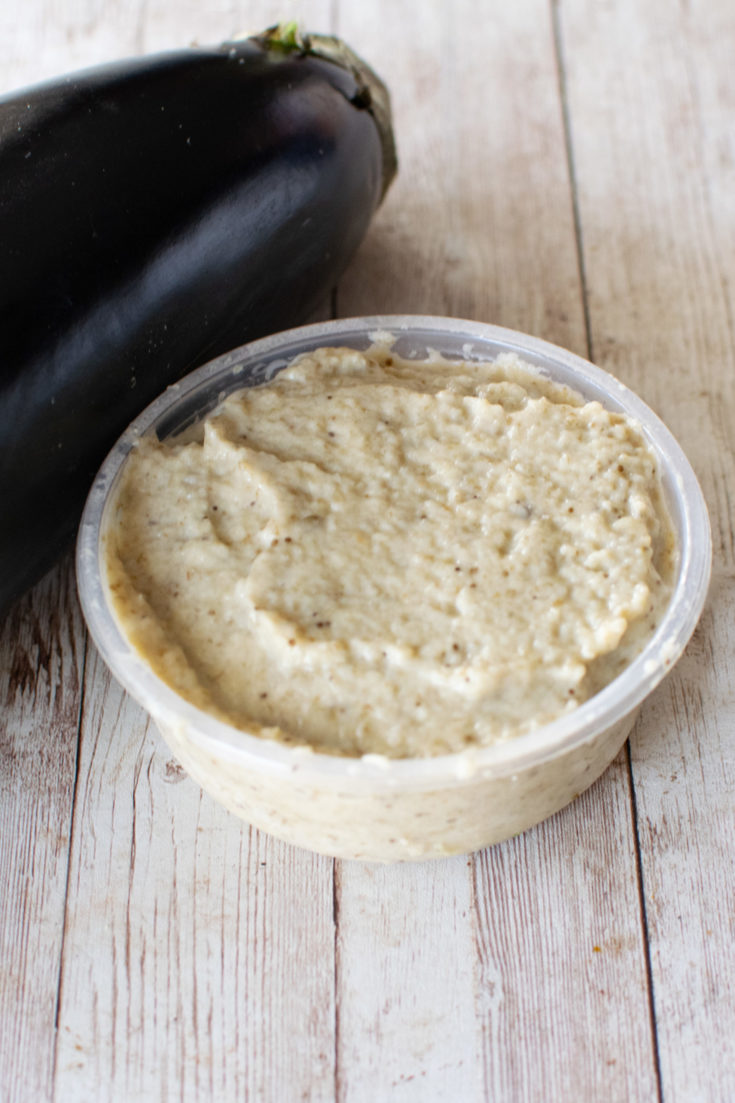
The Israeli version of baba ganoush, dairy free, vegetarian, and kosher for Passover.
Ingredients
- 2 medium eggplants
- 1/4 cup mayonnaise, kosher for Passover
- 1/2 teaspoon granulated garlic
- 1/2 teaspoon salt
- 1-2 teaspoons lemon juice, optional
Instructions
- Cut off the calyx (green top) of the eggplant.
- Roast the eggplants (*See notes)
- Peel off the burnt peel to access the cooked meat of the eggplant or alternately, cut open the eggplant and scoop out the inside.
- Place in a blender with the mayonnaise, granulated garlic, salt, and lemon juice, if desired, and blend well.
- Serve with olive oil or use as a spread.
Notes
* You can do this in several simple ways:
1) Roast over an open flame: Poke a fork or a knife into the eggplant in several places to allow air to escape. Then, place the eggplant over a burner with open flame on your stove (cover around the burner with aluminum foil first to protect it from the eggplant, which will leak as it cooks). Some people first wrap the eggplant in aluminum foil before placing on the flame, so whichever way works for you. Turn or reposition the eggplant every 2-3 minutes as the part over the flame has blackened and has shriveled a bit, until the entire eggplant has blackened shriveled somewhat. This is the best way to prepare it (over an open flame), because of the smokey flavor it gives.
2) Roast over an electric stove: The same as the process above, but use a grill pan over the burner. It may not cooks as quickly as it does on an open flame.
3) Roast in the oven: Poke a fork or a knife into the eggplant in several places to allow air to escape. Place the eggplant on a baking tray or in a baking pan lined with aluminum foil or baking paper. Place in a oven on a high temperature (400°F - you can use a higher temperature, but check more often) and turn the eggplant every 10-15 minutes or so until the entire eggplant has blackened shriveled somewhat.
4) Broil in the oven: Poke a fork or a knife into the eggplant in several places to allow air to escape. Place the eggplant on a baking tray or in a baking pan lined with aluminum foil or baking paper. Place in a oven on broil and turn the eggplant every few minutes or so until the entire eggplant has blackened shriveled somewhat.
Nutrition Information:
Yield:
4Serving Size:
1Amount Per Serving: Calories: 194Total Fat: 11gSaturated Fat: 2gTrans Fat: 0gUnsaturated Fat: 9gCholesterol: 6mgSodium: 355mgCarbohydrates: 25gFiber: 7gSugar: 9gProtein: 3g
Adrienne
Tuesday 27th of June 2023
Hi. I love the information you share. I love your philosophy as regards cooking simply (but deliciously and healthfully, too). After all, it is what I practice. However, it took me decades to understand and practice what became clear to you at a much earlier stage in your cooking "career." Bravo to you and what luck for your family, Adrienne
Lori
Wednesday 12th of July 2023
My kids made me learn quickly - I had no choice. I don't bother cooking for myself! Thanks for the feedback!